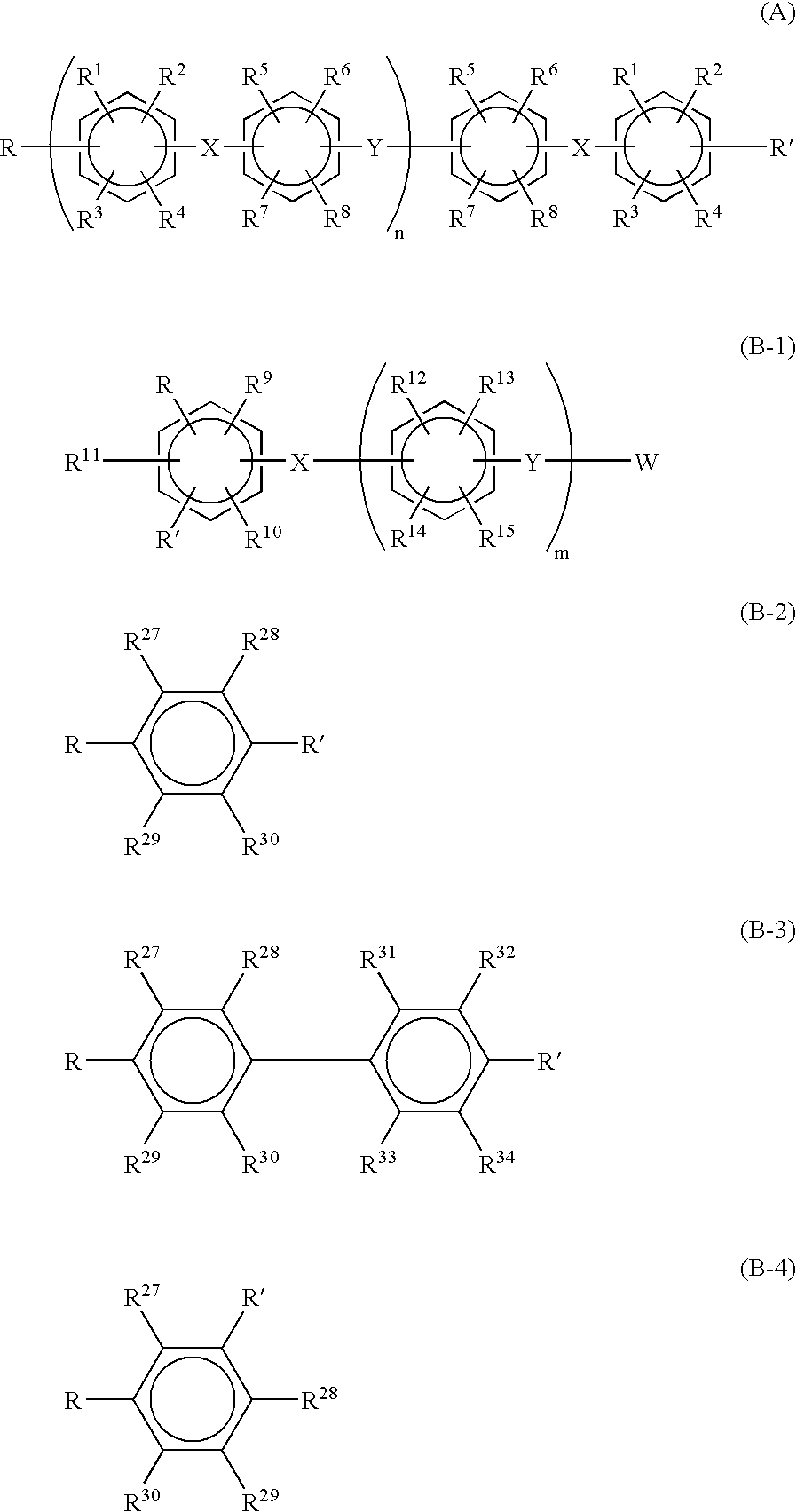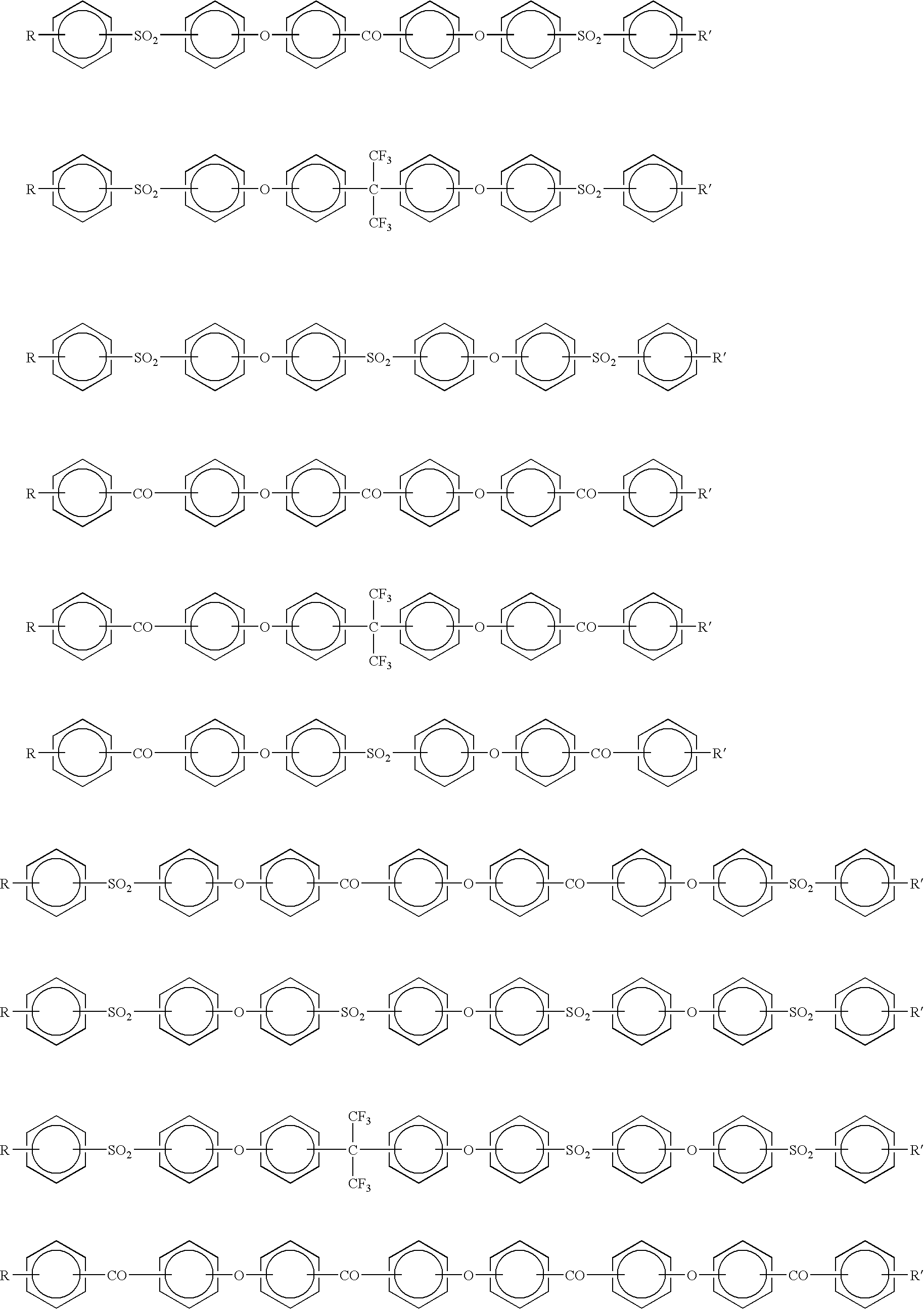Proton conductive membrane having improved thermal stability
- Summary
- Abstract
- Description
- Claims
- Application Information
AI Technical Summary
Benefits of technology
Problems solved by technology
Method used
Image
Examples
example 1
(Preparation of Proton Conductive Membrane)
[0103]A 15 wt % solution of the sulfonated polyarylene (in a mixed solvent consisting of methanol and NMP in 50:50 volume ratio) was cast to obtain a cast membrane (50 μm thick). The dried membrane still contained NMP in an amount of 10 parts by weight. Then a specimen 10 cm×10 cm was cut out from the dried membrane and soaked in an aqueous solution (5 L) containing 1.5 wt % of NMP for 24 hours at room temperature. Then the film was dried at 150° C. for 30 minutes, and the amount of solvent NMP remaining in the film was measured to be 6.7 parts by weight (in ratio to 100 parts by weight of the sulfonated polyarylene, the same applies hereinafter).
[0104]The proton conductivity and the heat resistance were measured for the thus-obtained proton conductive membrane containing 6.7 parts by weight of NMP.
[0105]The proton conductive membrane had a proton conductivity of 0.21 s / cm and yielded no insoluble matters on heat treatment. The principal-di...
example 2
(Preparation of Proton Conductive Membrane)
[0106]A specimen 10 cm×10 cm was cut out from a dried membrane prepared in the same manner as in Example 1, and it was soaked in an aqueous solution (5 L) containing 1.0 wt % of NMP for 24 hours at room temperature. Then the film was dried at 150° C. for 30 minutes, and the amount of solvent NMP remaining in the film was measured to be 5.8 parts by weight.
[0107]The proton conductivity and the heat resistance were measured for the thus-obtained proton conductive membrane containing 5.8 parts by weight of NMP.
[0108]The proton conductive membrane had a proton conductivity of 0.21 s / cm and yielded no insoluble matters on heat treatment. The principal-dispersion temperatures of tan δ of dynamic viscoelasticity were in the range of not lower than 180° C.
example 3
(Preparation of Proton Conductive Membrane)
[0109]A specimen 10 cm×10 cm was cut out from a dried membrane prepared in the same manner as in Example 1, and it was soaked in an aqueous solution (5 L) containing 0.5 wt % of NMP for 24 hours at room temperature. Then the film was dried at 150° C. for 30 minutes, and the amount of solvent NMP remaining in the film was measured to be 4.2 parts by weight.
[0110]The proton conductivity and the heat resistance were measured for the thus-obtained proton conductive membrane containing 4.2 parts by weight of NMP.
[0111]The proton conductive membrane had a proton conductivity of 0.21 s / cm and yielded no insoluble matters on heat treatment. The principal-dispersion temperatures of tan δ of dynamic viscoelasticity were in the range of not lower than 180° C.
PUM
| Property | Measurement | Unit |
|---|---|---|
| Temperature | aaaaa | aaaaa |
| Percent by mass | aaaaa | aaaaa |
| Percent by mass | aaaaa | aaaaa |
Abstract
Description
Claims
Application Information
 Login to View More
Login to View More - R&D
- Intellectual Property
- Life Sciences
- Materials
- Tech Scout
- Unparalleled Data Quality
- Higher Quality Content
- 60% Fewer Hallucinations
Browse by: Latest US Patents, China's latest patents, Technical Efficacy Thesaurus, Application Domain, Technology Topic, Popular Technical Reports.
© 2025 PatSnap. All rights reserved.Legal|Privacy policy|Modern Slavery Act Transparency Statement|Sitemap|About US| Contact US: help@patsnap.com



